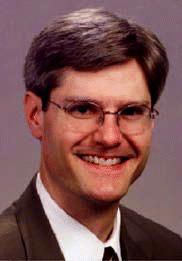Children with apnea who have teeth removed because of crowding might eventually need some expansion procedures, Dr. Woodson said.
Explore This Issue
December 2006The fiberoptic exam is not always needed if a patient is a surgical candidate, depending on the surgery, said Edward Weaver, MD, Associate Professor of Otolaryngology at the University of Washington. A significant portion of my practice is correcting the nasal airway to facilitate CPAP. I don’t do any fiberoptic exam on [these patients], he said.
Since so much attention is rightfully paid to the palate and tongue base, the nose is often an underappreciated part of the exam in potential sleep apnea surgical patients, said Tod Huntley, MD, from Head and Neck Surgery Associates in Indianapolis. In fact, the most common surgical procedures that most of us do for such patient is on the nose, particularly to improve CPAP tolerance and compliance, he said.
As for the nasal exam, the nasal valve is key to look at, since it can be where much of the resistance occurs, said Dr. Woodson. Problems might occur in one part or several.
Indeed, patients may have multiple abnormalities in the nose, but I don’t necessarily correct them all. I do it on as ‘as needed’ basis, said Dr. Weaver. A patient may have a narrow pyriform aperture that doesn’t bother him or her, for example, but can be worth repairing to help the patient’s apnea. On the other hand, I’ll treat a normal-looking turbinate if I think that will buy me room to facilitate CPAP, he said.
Dr. Mickelson stated he finds it worth being aggressive in treating the nose and that some of his patients aren’t even aware their nasal obstruction is problematic.
Dr. Huntley concurred, and said he is increasingly aggressive about treating the external nasal valves surgically for such patients. Yet we are all aware that numerous studies have shown that nasal surgery alone is rarely sufficient to control OSA. But appropriate nasal surgery is an important adjunct for complete surgical treatment of such patients, he said.
When Should Surgery Be Done?
When it comes to large tonsils, panelists were united in saying they’re certainly worth removing.
When you have big tonsils it tends to hold the palate forward. When you remove them you can see the palate settle back. You don’t appreciate that in your office exam because the scope is obscured by the tonsil, said Dr. Weaver.
At the same time, how much surgery is performed on the palate in the young, thin, otherwise normal adult with big tonsils depends on the severity of the apnea, he added. Big tonsils can lower the pressure in CPAP.

Leave a Reply